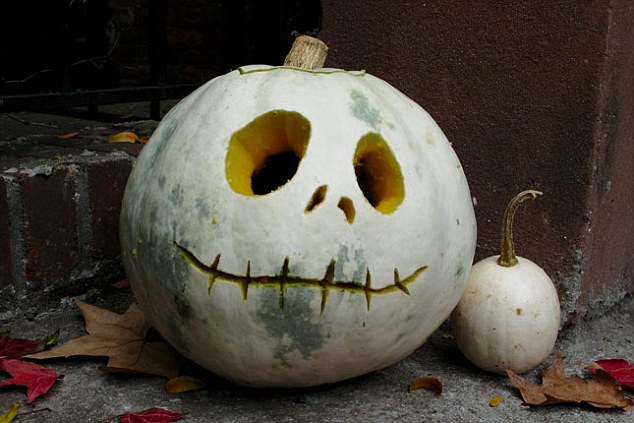Pumpkins, the vividly hued fruits of the Cucurbitaceae family, have experienced a remarkable diversification over time, thanks in part to the natural process of cross-pollination, as well as human interventions in selective breeding. Their diverse varieties, colors, and sizes reflect the evolutionary potential and adaptability of this particular species, making them a fascinating study for botanists, farmers, and pumpkin enthusiasts alike.
Cross-pollination, which involves the transfer of pollen from the flower of one plant to the flower of another plant, allows for the generation of genetically varied offspring. Bees, moths, and other pollinators act as intermediaries, inadvertently shuttling pollen between plants while they forage for nectar. The result of this activity is an intermingling of genetic traits, including those that dictate size, color, and taste. The process has given us that range from miniatures the size of an apple to gargantuan fruits that can weigh over a thousand pounds.
| Nutrient | Amount (per 100g) |
|---|---|
| Calories | 26 |
| Protein | 1g |
| Carbohydrates | 6.5g |
| Dietary Fiber | 0.5g |
| Sugars | 2.76g |
| Fat | 0.1g |
| Vitamin A | 8513 IU |
| Vitamin C | 9mg |
Usage
While they are often associated with the decorative tradition of carving Jack-O-Lanterns for Halloween, they also have culinary uses that are frequently overlooked. Carving into a spooky or whimsical face can be a fun, family-friendly activity, but it’s worth noting that this usage often does not lead to consumption. However, the potential for pumpkins extends far beyond this seasonal tradition. Their flesh, seeds, and even flowers can all be utilized in a range of dishes, from the iconic pumpkin pie to roasted seeds, soups, and more.
Selection
When choosing, it’s important to look for ones that are both hard and heavy for their size. This typically indicates a healthy, mature pumpkin with good density and moisture content. The skin should be free from cuts and bruises and have a uniform color throughout. If is for eating, the stem should be sturdy and firmly attached – a sign of freshness. However, if you’re choosing a pumpkin for carving, a stem that’s slightly woody or easy to snap off is perfectly fine.
Avoid
Be wary of any that feels unusually light for its size, as this could suggest a lack of freshness or internal rotting. Similarly, any soft spots on the pumpkin, even if they appear minor, can be indicative of the beginning stages of decay. Such pumpkins may not only lack in taste but could also spoil quickly, so they’re best avoided.
Storage
The hardy nature of pumpkins makes them excellent candidates for long-term storage. With their thick, hard skins, most varieties can be stored in a cool, dry place for at least a month. This is in stark contrast to their summer or soft squash cousins, which have a shorter shelf life due to their thinner skin. If you’ve cut into pieces, it’s best to wrap it tightly in plastic and store it in the refrigerator, where it should last for about a week.
Whole without any signs of decay can be stored at a temperature range of 45°F to 60°F (7°C to 15°C) for up to a month. If refrigerated, they can last for up to three months, making them an excellent source of nutrition even as the colder months roll in.
Ripening
Unlike certain fruits like bananas or tomatoes, pumpkins do not continue to ripen once they’ve been harvested. Therefore, it’s crucial to choose that’s already at its peak at the time of purchase. A mature pumpkin will have a uniform color and a hard skin that resists puncture when you press your thumbnail into it. Remember, when it comes to pumpkins, what you see at the time of purchase is what you get. Choose wisely and enjoy this versatile and delightful fruit to its fullest.
Tips & Trivia
Pumpkins, along with other types of squash, have a fascinating history. The name for squash comes from the Massachusett Indian word “Askutasquash,” which interestingly means “eaten raw.” This is a testament to the vital role these fruits played in Native American diets. They were not only an important source of food but were also considered a method of preserving water due to their high water content.
However, raw squash did not find favor with the early white settlers until more recent years. The rise of health-conscious eating and the trend of including a variety of raw fruits and vegetables in diets has led to the inclusion of raw summer squash types in salads.
Squash was a novel introduction to Europeans, who only became familiar with it when early explorers returned from America bearing squash seeds. The cultivation of squash then spread throughout Europe, and it has since become a staple in many European cuisines. This unique history serves as a reminder of the way foods can travel and become integrated into new cultures, fundamentally altering dietary patterns and culinary practices.
Final Words
In conclusion, pumpkins hold a place of remarkable importance in our diets, cultural practices, and history. They illustrate the intricate interplay of natural phenomena, such as cross-pollination, and human influence in their wide array of shapes, sizes, and colors. Their rich nutritional profile makes them a valuable part of our diet, while their versatility lends them to both culinary and decorative uses.

